Today you’re going to read about some of the most bizarre stars in existence. The universe is estimated to have about 100 billion galaxies and roughly 100 billion stars are in each galaxy. With so many stars there are bound to be a few oddballs. Many of the brilliant burning balls of gas are fairly similar to each other but some stand apart as bizarre for their size, weight, and behavior. Using advanced telescopes, scientists continue to study these stars to better understand them and the universe, but mysteries still remain. Curious to hear about the strangest stars out there? These are 25 most bizarre stars in the universe.

UY Scuti
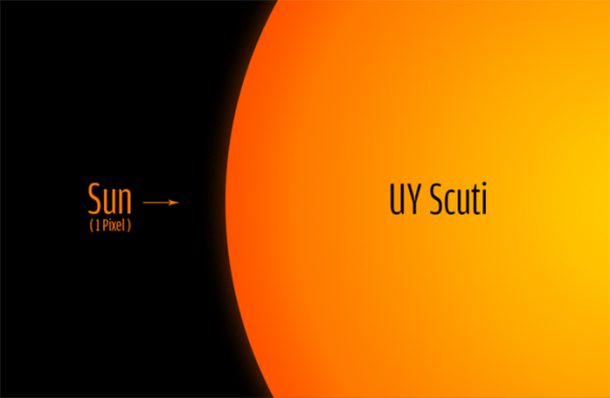 Source: http://www.dailymail.co.uk/sciencetech/article-4383936/Video-revealsUY-Scuti-biggest-star-spotted.html
Source: http://www.dailymail.co.uk/sciencetech/article-4383936/Video-revealsUY-Scuti-biggest-star-spotted.html Considered a hypergiant star, UY Scuti is so big it could swallow up our star, half our neighboring planets, and practically our entire solar system. Its radius is about 1,700 times larger than the radius of the sun.
The Methuselah Star
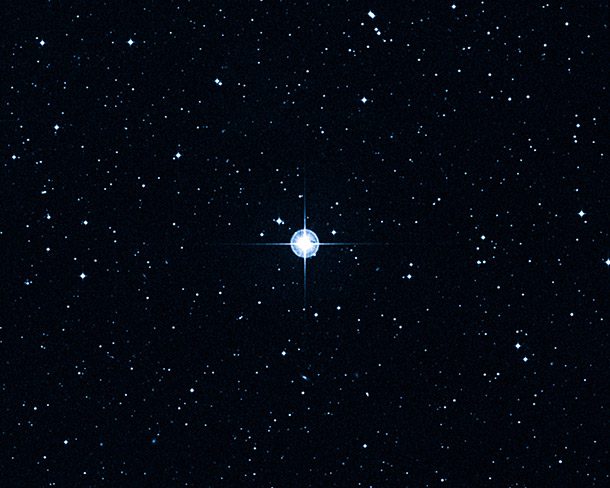 Source: https://www.space.com/20112-oldest-known-star-universe.html
Source: https://www.space.com/20112-oldest-known-star-universe.html The Methuselah Star, also named HD 140283, really lives up to its name. Some have dated it back to 16 billion years old, which is a problem since the Big Bang started only 13.8 billion years ago. Astronomers have tried to use more advanced aging techniques to better date the star but still came to 14 billion years old.
Thorne-Zytkow Object
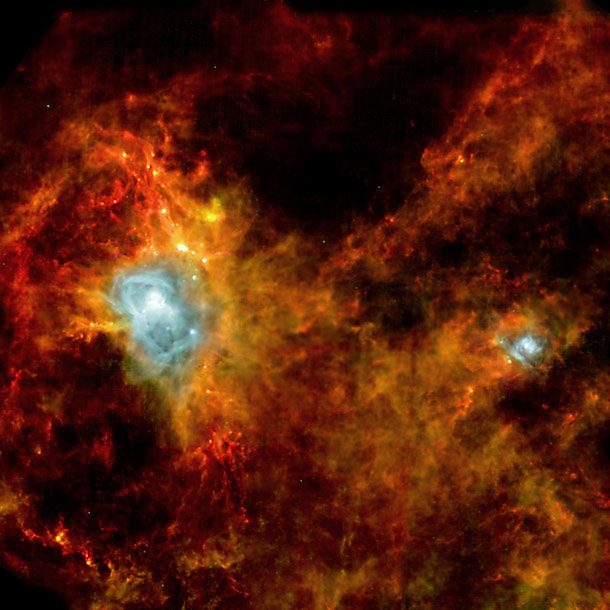 Source: https://www.space.com/27389-hybrid-star-discovery-thorne-zytkow-object.html
Source: https://www.space.com/27389-hybrid-star-discovery-thorne-zytkow-object.html First proposed as a theory by Kip Thorne and Anna Zytkow, the Thorne-Zytkow Object is two stars, a neutron star and red supergiant star, that combined together into one star. They discovered a potential candidate for this kind of star called HV 2112.
R136a1
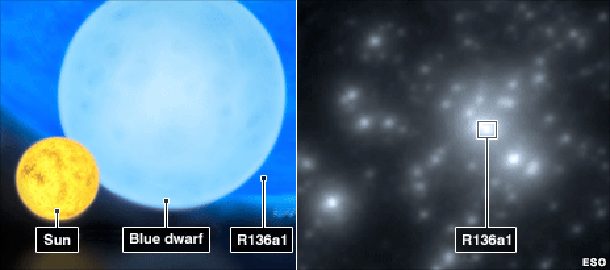 Source: http://earthsky.org/space/how-big-is-the-biggest-monster-star
Source: http://earthsky.org/space/how-big-is-the-biggest-monster-star While UY Scuti is the largest star known to man, R136a1 is definitely one of the heaviest in the universe. Its mass is 265 times more than our Sun. What makes it so bizarre is we don’t exactly know how it formed. The leading theory is that it formed through the merging of multiple stars.
PSR B1257+12
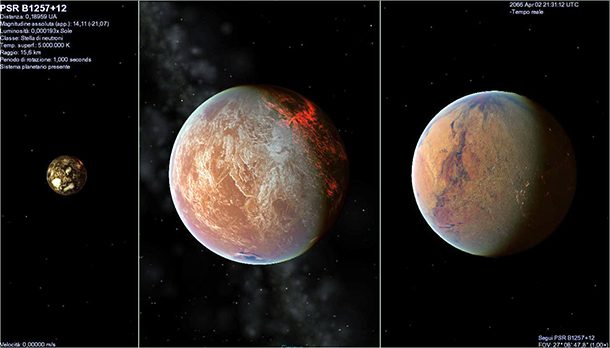 Source: https://www.nasa.gov/topics/universe/features/exoplanetHouseOfHorrors.html
Source: https://www.nasa.gov/topics/universe/features/exoplanetHouseOfHorrors.html Most of the exoplanets in the solar system of PSR B1257+12 are dead and bathed in deadly radiation from their old star. The bizarre thing about their star is it’s a zombie star, or pulsar, that died but the core still remains. The radiation emitting from it makes the solar system a virtual no-man’s land.
SAO 206462
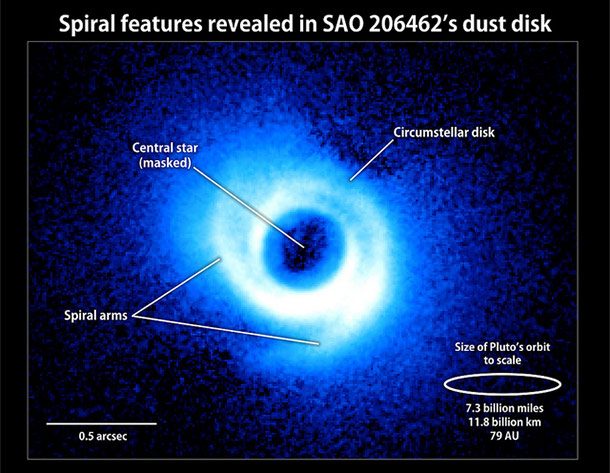 Source: https://futurism.com/5-weird-stars-found-galaxy/
Source: https://futurism.com/5-weird-stars-found-galaxy/ With a set of two spiral arms spanning 14 million miles across, SAO 206462 is a bizarre and unique star in the universe, indeed. While some galaxies are known to have arms, stars usually don’t. Scientists believe this star is in the process of making planets.
2MASS J0523-1403
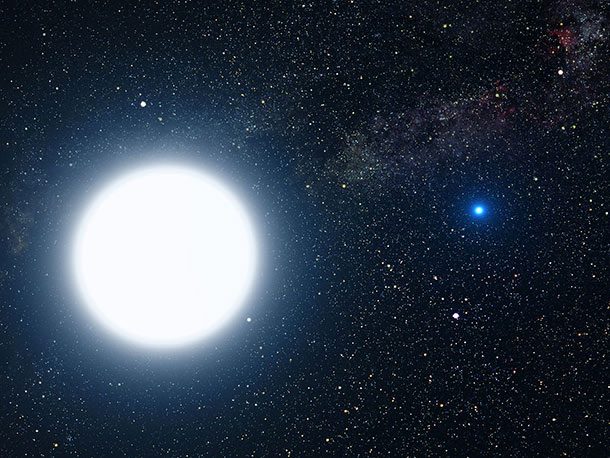 Source: https://www.scientificamerican.com/article/a-star-at-the-edge-of-eternity/
Source: https://www.scientificamerican.com/article/a-star-at-the-edge-of-eternity/ 2MASS J0523-1403 is quite possibly the smallest known star in the universe, and it’s only 40 light years away. Because it has such a small size and mass, scientists believe it could live for 12 trillion years.
Heavy Metal Subdwarfs
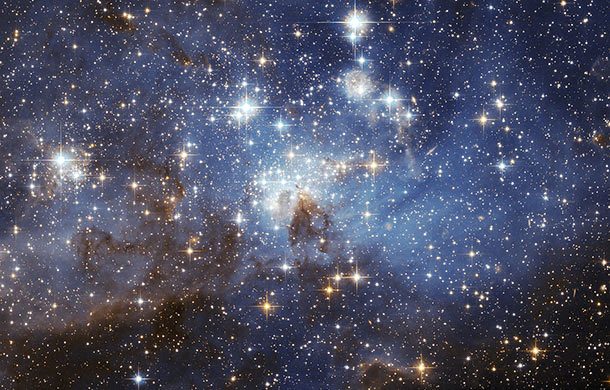 Source: https://scitechdaily.com/astronomers-discover-unusual-stars-with-extremely-high-concentrations-of-lead-in-their-atmospheres/
Source: https://scitechdaily.com/astronomers-discover-unusual-stars-with-extremely-high-concentrations-of-lead-in-their-atmospheres/ Recently, astronomers discovered a couple of stars with a high amount of lead in their atmospheres, creating thick and heavy clouds surrounding the stars. They are HE 2359-2844 and HE 1256-2738, both 800 and 1,000 light years away respectively, but you can just call them Heavy Metal Subdwarfs. Scientists are still not sure how they form.
RX J1856.5-3754
 Source: https://www.eso.org/public/usa/news/eso0029/
Source: https://www.eso.org/public/usa/news/eso0029/ From the moment of their birth, neutron stars lose energy and cool down without stopping. So, it’s unusual that a 100,000-year-old neutron star like RX J1856.5-3754 could be so hot and not show any signs of activity. Scientists posit that interstellar material could be caught in its heavy gravitational field, creating enough energy to heat up the star.
KIC 8462852
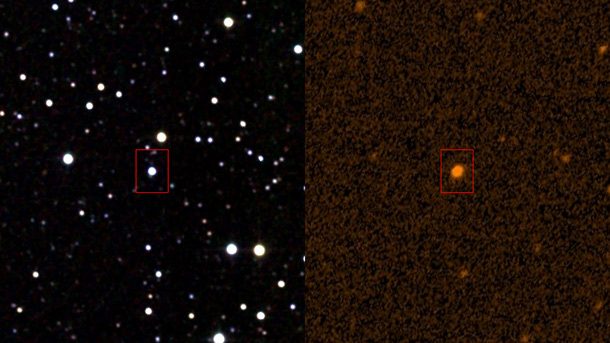 Source: https://www.seti.org/seti-institute/mysterious-star-kic-8462852
Source: https://www.seti.org/seti-institute/mysterious-star-kic-8462852 The stellar system KIC 8462852 has come under intense observation and interest by SETI and astronomers for its unusual behavior recently. Occasionally, it dims by 20 percent, which might mean something is orbiting it. Of course, some have jumped to the conclusion it’s aliens, but another explanation is debris from a comet that has come into orbit with the star.
Vega
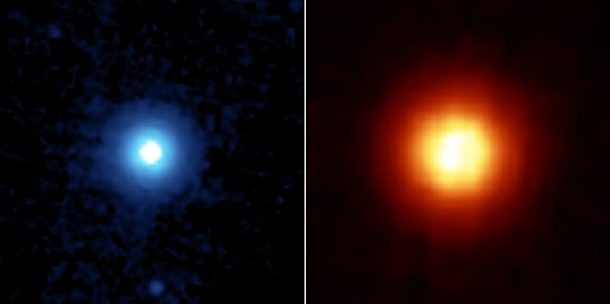 Source: https://futurism.com/5-weird-stars-found-galaxy/
Source: https://futurism.com/5-weird-stars-found-galaxy/ Vega is the fifth brightest star in the night sky, but that’s not what makes it bizarre. Rotating 600,000 miles per hour, the intense speed bends it into an egg shape rather than spherical like our sun. It also has temperature variations, cooling at its equator.
SGR 0418+5729
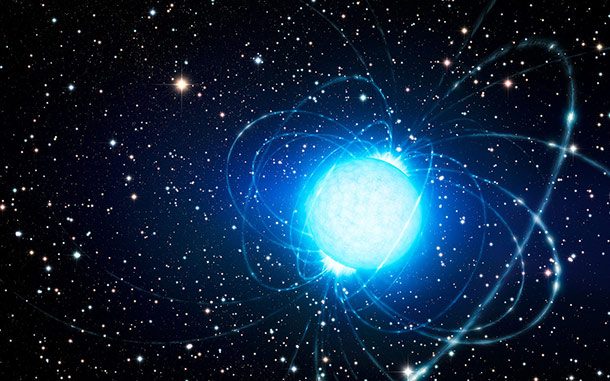 Source: https://scitechdaily.com/magnetar-sgr-0418-has-one-of-the-strongest-magnetic-fields-in-the-universe/
Source: https://scitechdaily.com/magnetar-sgr-0418-has-one-of-the-strongest-magnetic-fields-in-the-universe/ A magnetar 6,500 light years away from Earth, SGR 0418+5729 has the strongest magnetic field in the universe. What’s peculiar is that it doesn’t fit the pattern of normal magnetars with a surface magnetic field similar to regular neutron stars.
Kepler-47
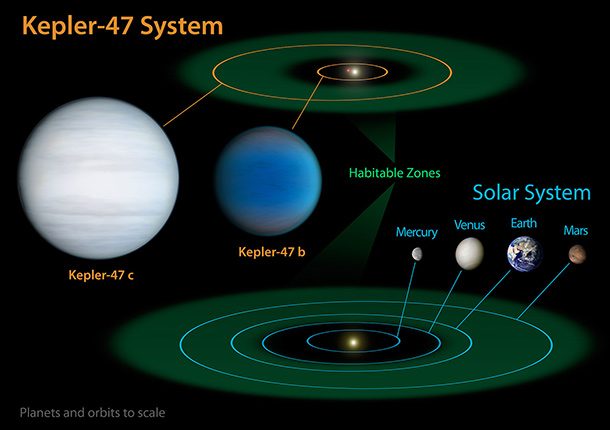 Source: https://www.nasa.gov/mission_pages/kepler/news/kepler-47.html
Source: https://www.nasa.gov/mission_pages/kepler/news/kepler-47.html In the constellation Cygnus, 4,900 light years away from Earth, astronomers for the first time have discovered a pair of planets orbiting two stars. Known as the Kelper-47 system, the orbiting stars eclipse each other ever 7.5 days. One star is about equal to our Sun in size but is only 84 percent as bright. The discovery proves more than one planet can exist in the stressful orbit of a binary star system.
La Superba
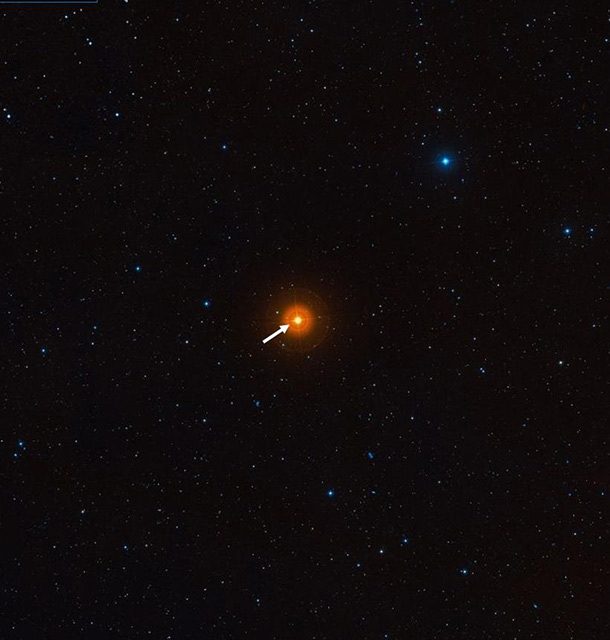 Source: https://www.universetoday.com/102161/seeing-the-red-of-la-superba-a-magnificent-springtime-carbon-star/
Source: https://www.universetoday.com/102161/seeing-the-red-of-la-superba-a-magnificent-springtime-carbon-star/ La Superba is another massive star 800 light years away. It’s about 3 times the mass of our Sun and four astronomical units in size. It’s so bright it can be seen by the naked eye on Earth.
MY Camelopardalis
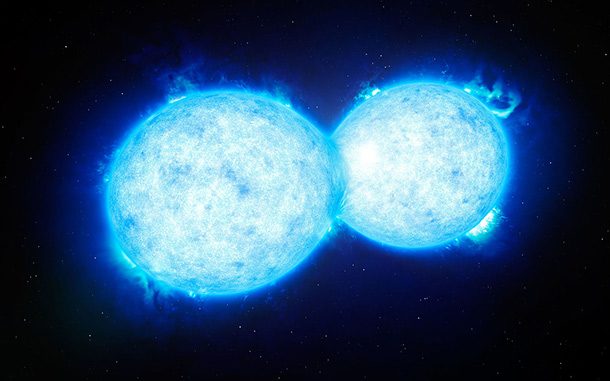 Source: http://news.sciencemag.org/space/2014/12/massive-merger-two-giant-blue-stars-are-about-meld
Source: http://news.sciencemag.org/space/2014/12/massive-merger-two-giant-blue-stars-are-about-meld MY Camelopardalis was thought to be a bright single star but later was discovered to be two stars so close to each other, they’re practically touching. The two stars are slowly melding together to create one star. No one knows when they’ll fully merge.
PSR J1719-1438b
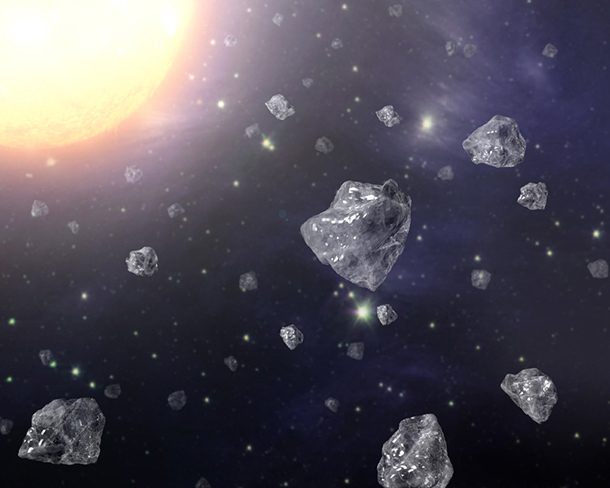 Source: https://futurism.com/psr-j1719-1438-the-star-that-turned-into-a-diamond-planet-2/
Source: https://futurism.com/psr-j1719-1438-the-star-that-turned-into-a-diamond-planet-2/ Technically, PSR J1719-1438b isn’t a star, but it was once. When it was a star, its outer layers were sucked away by another star, transforming it into a small planet. What’s even more crazy about this former star is it’s now basically a giant diamond planet five times larger than the Earth.
OGLE TR-122b
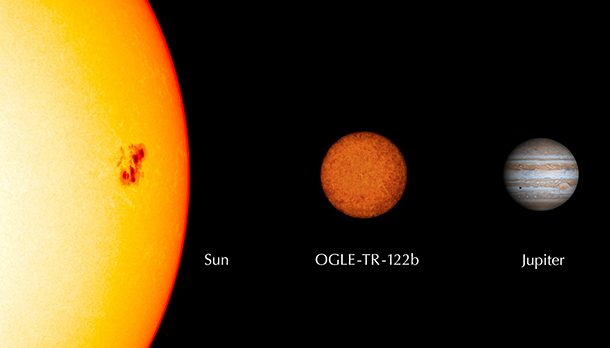 Source: http://www.newscientist.com/article/dn7098-planet-search-reveals-smallest-star-ever.html#.UldXF1CshOY
Source: http://www.newscientist.com/article/dn7098-planet-search-reveals-smallest-star-ever.html#.UldXF1CshOY Usually, the average size of a star makes most planets look like pebbles but in OGLE TR-122b’s case, it’s about the same size as Jupiter. That’s right, its the smallest star in the universe. Scientists believe it began as a stellar runt a few billion years ago; it’s the first time they found a star in size comparable to a planet.
L1448 IRS3B
 Source: https://www.theverge.com/2016/10/26/13408790/multiple-star-system-birth-formation-theory-proven
Source: https://www.theverge.com/2016/10/26/13408790/multiple-star-system-birth-formation-theory-proven Astronomers discovered L1448 IRS3B, a triple star system, right when it started to form. Using the ALMA telescope in Chile, they watched as two young stars revolved around a much older star. They believe these two young stars were created from a nuclear reaction from the rotating gas around a star.
Mira
 Source: http://earthsky.org/brightest-stars/mira-quite-wonderful
Source: http://earthsky.org/brightest-stars/mira-quite-wonderful Mira, also known as Omicron Ceti, is 420 light years away and is rather bizarre for its constantly fluctuating brightness. Scientists believe its a dying star at the end of its life. Even more amazing is the fact it’s traveling through space at 80 miles per second and has a tail a few light years long.
Fomalhaut-C
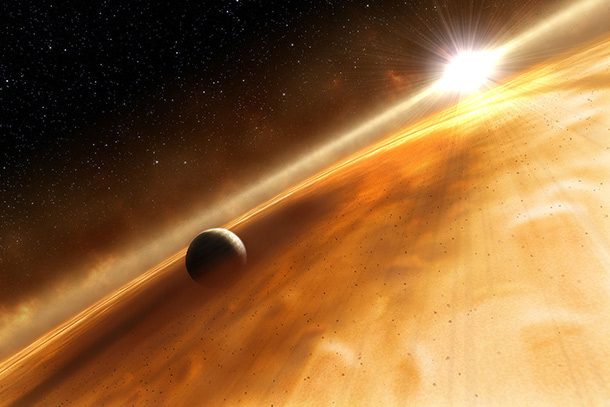 Source: http://www.astronomy.com/news/2013/10/researchers-find-that-bright-nearby-double-star-fomalhaut-is-actually-a-triple
Source: http://www.astronomy.com/news/2013/10/researchers-find-that-bright-nearby-double-star-fomalhaut-is-actually-a-triple If you thought a double star system was cool, then you might want to sit down for Fomalhaut-C. It’s a triple star system only 25 light years from Earth. While triple star systems aren’t exactly unique, this one is because the stars are far apart rather than close together, an abnormality. Fomalhaut-C is particularly far away from A and B.
Swift J1644+57
 Source: https://www.nasa.gov/mission_pages/swift/bursts/devoured-star.html
Source: https://www.nasa.gov/mission_pages/swift/bursts/devoured-star.html Black hole appetites do not discriminate. In the case of Swift J1644+57, a dormant black hole awoke and devoured a star. Scientists made the discovery in 2011 using x-ray and radio wavelengths. It took the light of the event 3.9 billion light years to reach Earth.
PSR J1841-0500
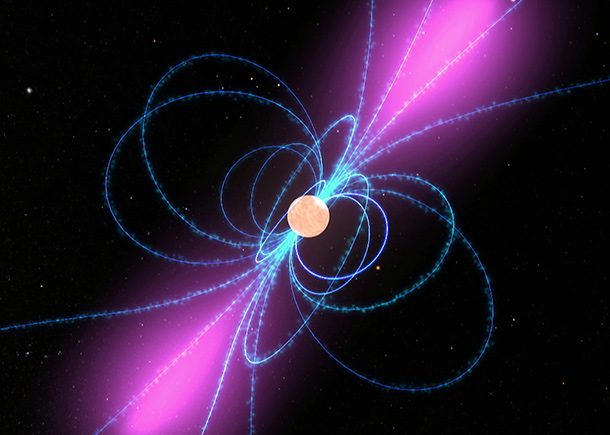 Source: https://www.space.com/14673-vanishing-pulsars-spinning-stars-mystery.html
Source: https://www.space.com/14673-vanishing-pulsars-spinning-stars-mystery.html Known for their regular and continuous pulsing beams of light, pulsars are fast-spinning stars which rarely “turn off.” But PSR J1841-0500 surprised scientists when it did just that for 580 days. Scientists believe studying it will help them understand how pulsars work.
PSR J1748-2446
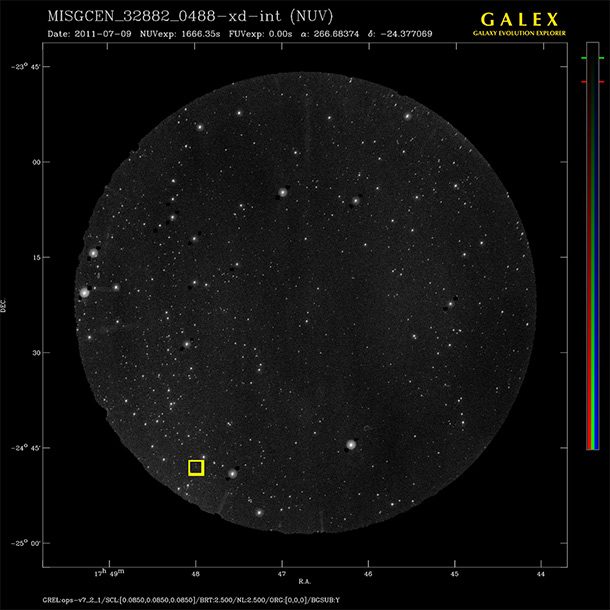 Source: http://www.astronomy.com/magazine/weirdest-objects/2015/05/31-neutron-star-psr-j17482246
Source: http://www.astronomy.com/magazine/weirdest-objects/2015/05/31-neutron-star-psr-j17482246 The weirdest thing about PSR J1748-2446 is that its the universe’s fastest spinning object. It has a density 50 trillion times greater than lead. To top it off, its magnetic field is a trillion times more intense than our Sun. In short, it’s one insanely overactive star.
SDSS J090745.0+024507
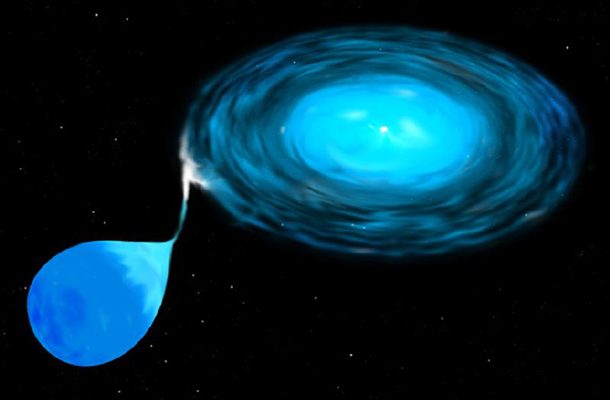 Source: http://www.astronomy.com/magazine/weirdest-objects/2015/06/29-sdss-j0907450024507
Source: http://www.astronomy.com/magazine/weirdest-objects/2015/06/29-sdss-j0907450024507 SDSS J090745.0+024507 is a ridiculously long name for a star that got away. With the help of a supermassive black hole, the star flung out of its orbit and is moving fast enough to escape the Milky Way. Let’s just hope one of these getaway stars doesn’t come barreling toward us.
Magnetar SGR 1806-20
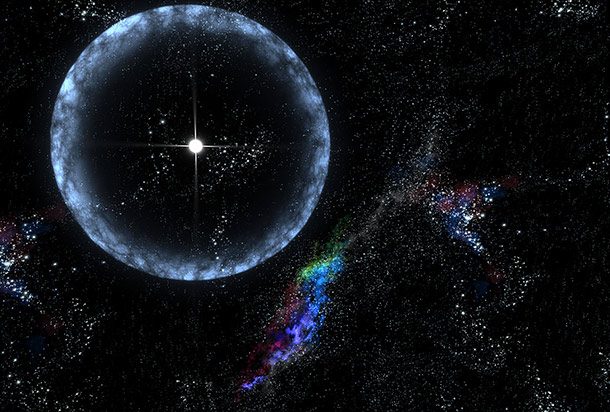 Source: https://www.nasa.gov/vision/universe/watchtheskies/swift_nsu_0205.html
Source: https://www.nasa.gov/vision/universe/watchtheskies/swift_nsu_0205.html Magnetar SGR 1806-20 is a terrifying force existing in our universe. Located 50,000 light years away, astronomers detected a bright flash so powerful it bounced off the moon and lit up the Earth’s atmosphere for ten seconds. The solar flare raised questions among scientists if another one like it led to an extinction event on Earth.
Lists Going Viral Right Now
Photo: 25. TheNerdSatan, UY Scuti size comparison to the sun (1), CC BY-SA 4.0, 24. ESA/Hubble, Oldest star in solar neighbourhood, CC BY 4.0, 23. Wikipedia Commons.com (Public Domain), 22. NASA Blueshift via flickr. CC BY 2.0, 21. Tyrogthekreeper at en.wikipedia, PSR B1257+12 System, CC BY-SA 3.0, 20. NASA Blueshift via flickr. CC BY 2.0, 19. Wikipedia Commons.com (Public Domain), 18. ESA/Hubble, Starsinthesky, CC BY 4.0, 17 – 15. Wikipedia Commons.com (Public Domain), 14. ESO/L. Calçada, Artist’s impression of the magnetar in the star cluster Westerlund 1, CC BY 4.0, 13. Wikipedia Commons.com (Public Domain), 12. Oppertunity, Y CVn, CC BY 3.0, 11. ESO/L. Calçada, An artist’s impression of the hottest and most massive touching double star, CC BY 4.0, 10. Wikipedia Commons.com (Public Domain), 9. ESO/SOHO/ESA/Cassini/NASA-JPL/University of Arizona, Comparison Between OGLE-TR-122b, Jupiter and the Sun, CC BY 4.0, 8. ALMA (ESO/NAOJ/NRAO)/J.J. Tobin (University of Oklahoma/Leiden University), Young Stellar System Caught in the Act of Forming Close Multiples, CC BY 4.0, 7 – 1. Wikipedia Commons.com (Public Domain)



























